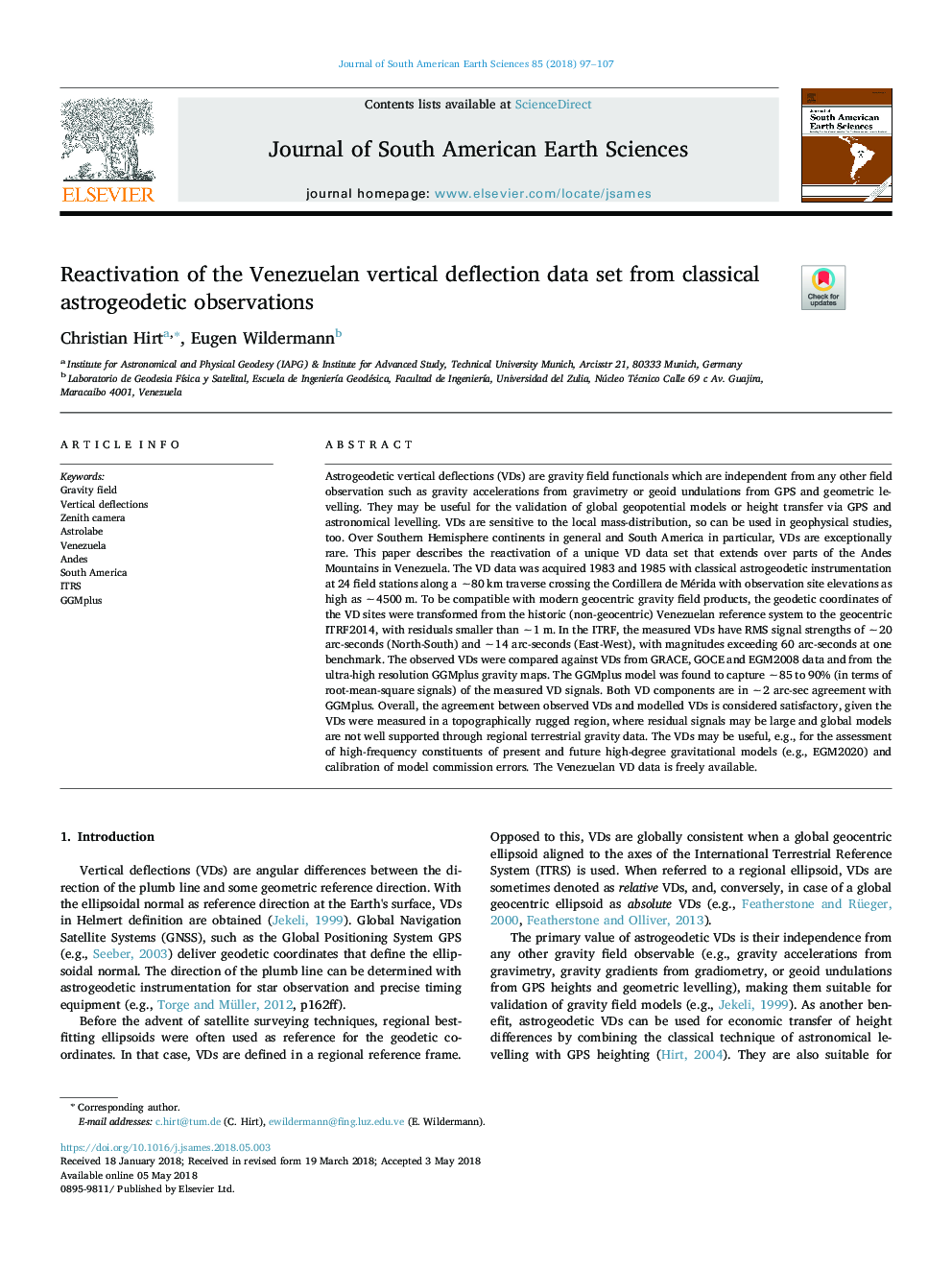| کد مقاله | کد نشریه | سال انتشار | مقاله انگلیسی | نسخه تمام متن |
|---|---|---|---|---|
| 8907615 | 1635125 | 2018 | 11 صفحه PDF | دانلود رایگان |
عنوان انگلیسی مقاله ISI
Reactivation of the Venezuelan vertical deflection data set from classical astrogeodetic observations
ترجمه فارسی عنوان
فعال کردن داده های انحراف عمودی ونزوئلا از مشاهدات کلاسیک آستروگودنتیک
دانلود مقاله + سفارش ترجمه
دانلود مقاله ISI انگلیسی
رایگان برای ایرانیان
کلمات کلیدی
موضوعات مرتبط
مهندسی و علوم پایه
علوم زمین و سیارات
علوم زمین و سیاره ای (عمومی)
چکیده انگلیسی
Astrogeodetic vertical deflections (VDs) are gravity field functionals which are independent from any other field observation such as gravity accelerations from gravimetry or geoid undulations from GPS and geometric levelling. They may be useful for the validation of global geopotential models or height transfer via GPS and astronomical levelling. VDs are sensitive to the local mass-distribution, so can be used in geophysical studies, too. Over Southern Hemisphere continents in general and South America in particular, VDs are exceptionally rare. This paper describes the reactivation of a unique VD data set that extends over parts of the Andes Mountains in Venezuela. The VD data was acquired 1983 and 1985 with classical astrogeodetic instrumentation at 24 field stations along a â¼80â¯km traverse crossing the Cordillera de Mérida with observation site elevations as high as â¼4500â¯m. To be compatible with modern geocentric gravity field products, the geodetic coordinates of the VD sites were transformed from the historic (non-geocentric) Venezuelan reference system to the geocentric ITRF2014, with residuals smaller than â¼1â¯m. In the ITRF, the measured VDs have RMS signal strengths of â¼20 arc-seconds (North-South) and â¼14 arc-seconds (East-West), with magnitudes exceeding 60 arc-seconds at one benchmark. The observed VDs were compared against VDs from GRACE, GOCE and EGM2008 data and from the ultra-high resolution GGMplus gravity maps. The GGMplus model was found to capture â¼85 to 90% (in terms of root-mean-square signals) of the measured VD signals. Both VD components are in â¼2 arc-sec agreement with GGMplus. Overall, the agreement between observed VDs and modelled VDs is considered satisfactory, given the VDs were measured in a topographically rugged region, where residual signals may be large and global models are not well supported through regional terrestrial gravity data. The VDs may be useful, e.g., for the assessment of high-frequency constituents of present and future high-degree gravitational models (e.g., EGM2020) and calibration of model commission errors. The Venezuelan VD data is freely available.
ناشر
Database: Elsevier - ScienceDirect (ساینس دایرکت)
Journal: Journal of South American Earth Sciences - Volume 85, August 2018, Pages 97-107
Journal: Journal of South American Earth Sciences - Volume 85, August 2018, Pages 97-107
نویسندگان
Christian Hirt, Eugen Wildermann,
